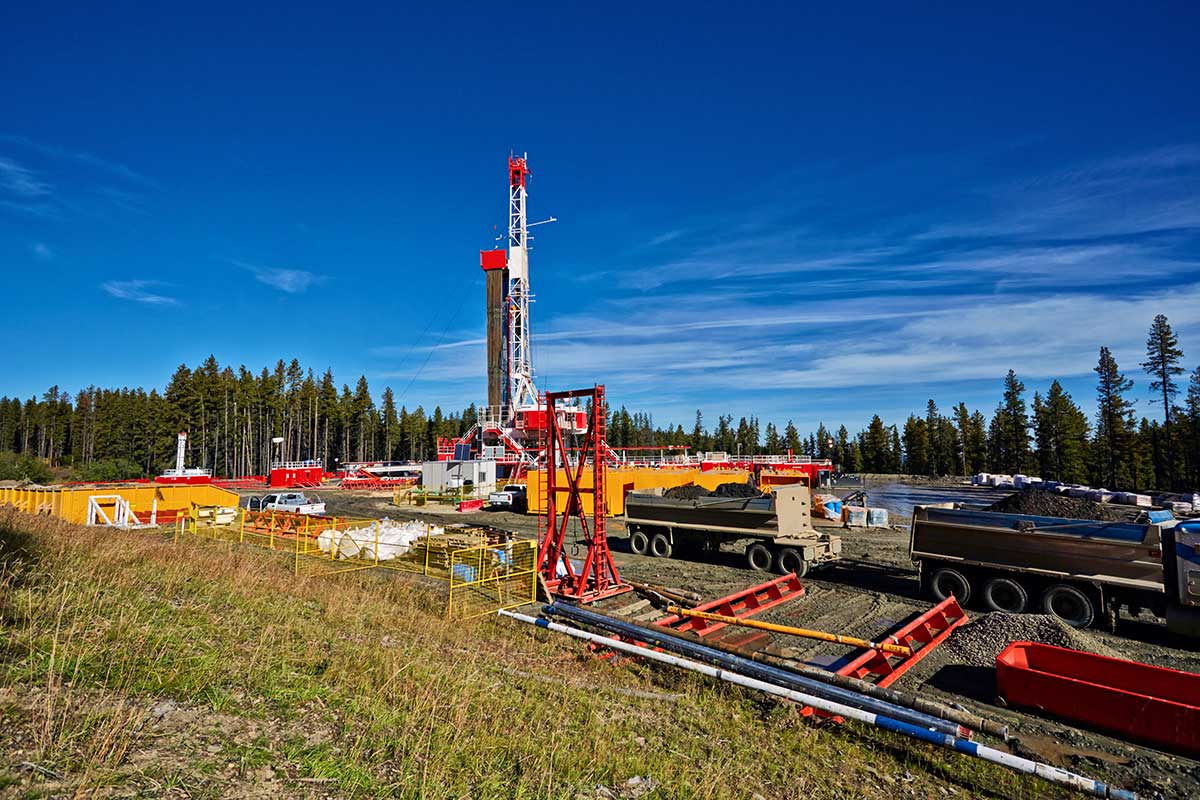
A UAlberta researcher is the first to link the likelihood of earthquakes caused by hydraulic fracturing to the location of well pads and volume of liquid used in the process.
The volume of hydraulic fracturing fluid and the location of well pads control the frequency and occurrence of measurable earthquakes, new Alberta Geological Survey and UAlberta research has found.
Ryan Schultz has been studying earthquakes in the Fox Creek, Alberta area since they started in December 2013. The seismologist-who works at the Alberta Geological Survey (a branch of the Alberta Energy Regulator) and with the University of Alberta-wanted to better understand what was causing the quakes.
Schultz and his colleagues found that when increased volumes were injected in susceptible locations (i.e., in connection with a nearby slip-ready fault), it transmits increased pressure to the fault line, leading to more numerous measurable earthquakes.
It's not as simple as more volume equals more earthquakes, though-a link that scientists have long identified in the history of induced seismicity, dating back to the 1950s. There is another factor at play in the Fox Creek area, and it's all about location, explained Schultz.
"If there is a pre-existing fault, but you're not connected to it by some sort of fluid pathway, you can hydraulically fracture the formation, and you're probably not going to cause a significant earthquake," said Schultz. "It's conceptually quite simple, but actually determining those things underground is really hard to do in practice."
Since 2013, there has been a marked increase in the rate of earthquakes near Fox Creek, ranging up to magnitude 4s. While other research has pointed to industry activity as contributing to the quakes, this study is the first to identify specific factors causing the seismic activity.
Schultz said the next steps for the scientists are to build on these findings to better understand the geological factors occurring in this concentrated area of the Duvernay Formation with the future goal of better predicting best places to conduct hydraulic fracturing where it is least likely to cause these earthquakes.
To answer these questions, the UAlberta alumnus continues to work with Jeff Gu, geophysics professor in the Department of Physics and Schultz's former graduate supervisor, and colleagues at the Alberta Geological Survey.
"We want to characterize everything we can about these earthquakes so that we can describe them in as much detail as possible," said Schultz. "But when you answer questions, more questions come up."
"Hydraulic fracturing volume is associated with induced earthquake productivity in the Duvernay play" will be published in the January 19 issue of Science, one of the world's leading peer-reviewed scientific publications.